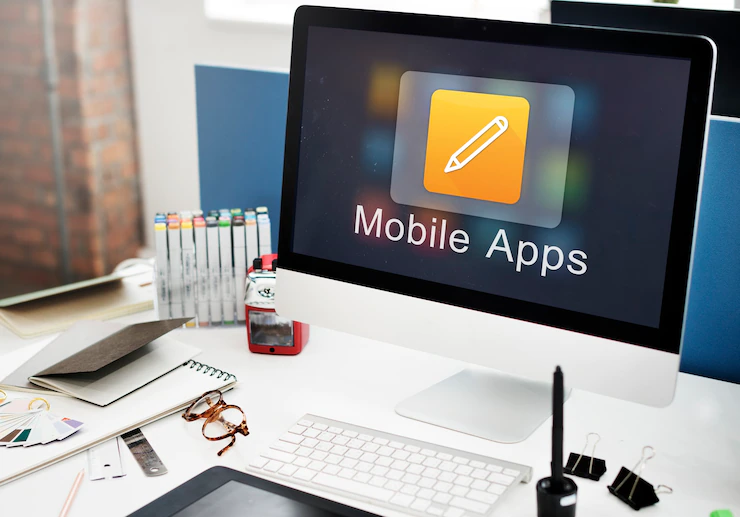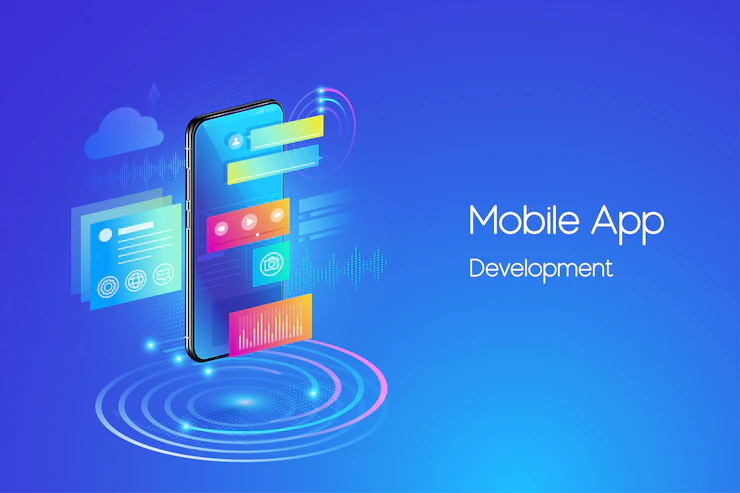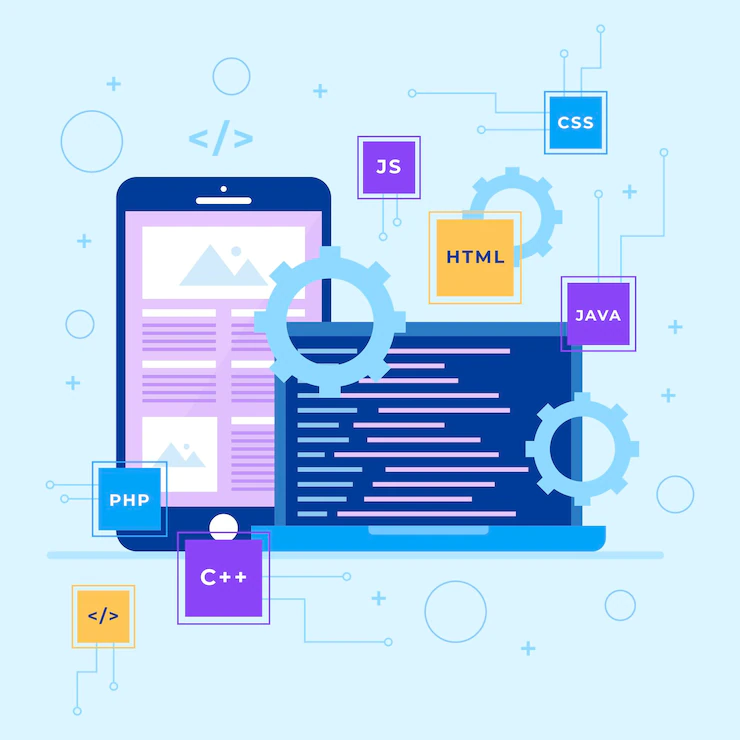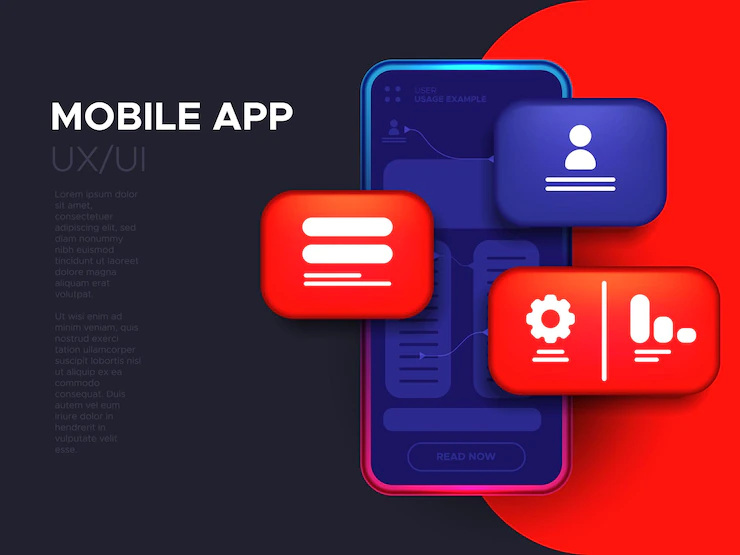Understanding the iPhone App Development Process
So you have a potentially life-changing app idea and are ready to begin development – but where and how do you get started? This article will give you a quick overview of the process of developing an iPhone app from start to finish. Mobile apps have become part of our daily routines for work, personal growth, and entertainment. iPhone apps, which work on Apple devices, are designed to meet the demands of different customers. What sets iPhone apps apart from other mobile applications? How does the development journey for iPhone apps look?

iPhone app development presents several opportunities to software developers
iPhone apps are available for Apple devices, including the iPhone, iPad and iPod Touch. The iPhone app development market is on a growth trajectory. The number of new customers purchasing Apple devices keeps growing daily. Additionally, phones are becoming more sophisticated, performing complex tasks that were previously unmanageable on phones. Technological advances are making it easier to live life to the fullest, with the latest iPhone models boasting AI capabilities. Your phone will not only help you communicate. It allows you to scan barcodes, translate languages, convert speech to text, perform financial calculations, and take and edit videos, among other capabilities. Here is a comprehensive guide that describes the stages of iPhone app development, vital tools for designing, developing and testing iPhone apps, how to find iPhone app developers, and requirements for approving iPhone apps on the Apple App Store.
What is the iPhone App Development Process?
The iPhone app development is the lifecycle process of creating and developing apps for iPhone devices. The iPhone app development process (also known as the iPhone app development lifecycle) is a way of thinking about the entire process involved in developing apps for iPhones. The iPhone is Apple’s line of smartphones that operate on iOS, the operating system developed by Apple. Therefore, the iPhone app development process entails creating and developing apps on the iOS platform using standard tools and programming languages. This process can be divided into four distinct stages: ideation, design, development, and launch.
Ideation is the first stage of the process, and it involves coming up with an idea for an app. It involves identifying an existing market need or gathering information about customer needs.
A perfect idea generation results from deliberate analysis of the customer’s product demand and brainstorming on the potential product specification, which defines what the final app needs to do and how it must perform those tasks effectively.

iPhone apps should meet customer expectations
It is hard to develop a user-friendly product if the iPhone app development team lacks a comprehensive app idea. The ideation stage also involves defining the specific scope of the app, which will vary in terms of the target market, product price range, and technology used. Idea generation can be simplified by making some assumptions about the product functionality and conducting simple market research to understand how other iPhone app designers handle new product development.
Once an idea has been generated, it must then be designed. This stage includes creating mockups and prototypes of the iPhone app. It is an extensive technical stage that requires the participation of an experienced UI/UX designer. The mockup or product concept should explain how the development team aims to fulfill customer needs through a strategically implemented informational architecture and user flows. An iPhone app development company can utilize different types of prototypes to showcase the revolutionary software product. The ideal iPhone app development company should manage the complete user experience design process from brainstorming, detailed app functionality strategy, implementation and coordination with in-house designers, developers and any other subcontractors to ensure timely delivery of iPhone apps.
After the design stage, the app moves to the development stage. Getting the app out to the market and on millions of iPhones takes time. iPhone app development might take several weeks to months. The different teams engaged in coding must devise innovative strategies to handle complex workflows, accommodate changes in the development process and streamline multi-team collaborations. The iPhone app development company manages to code for front-end and back-end app development. The developers rely upon different app development platforms and programming languages to convert ideas into functional products. Some programming languages used for iPhone app development include Swift, Objective-C, JavaScript, HTML5 and Ruby on Rails. iPhone apps are developed on platforms like Xamarin, a cross-platform mobile app development platform that allows users to build native and hybrid iOS applications.
After finalizing coding and development work, individually or with the help of iPhone programmers, the app is ready for testing. It is a critical stage to evaluate if the designed product functions as intended. Are the features used customer-centric? How interactive is the user interface? iPhone app testing must consider user experience, as well as performance and reliability. It explains why companies must conduct functionality tests internally and engage external testers to receive sufficient feedback to optimize app functionality and reliability.
Popular iPhone App Development Languages
Which programming languages can you use for iPhone app development? There are several options in the market. Each language has unique advantages. Before settling on programming languages, understand the type and quality of the iPhone app you intend to build. The iPhone app development team must look beyond the product launch and consider post-launch app maintenance and upgrades. Also, the developer should consider if they are building native apps or intend to use the same code base to build cross-platform apps.
Below are some of the most popular iPhone app development languages. Mastering one or more of these languages is critical for kickstarting your development journey and building a revolutionary iPhone app.

Developers require a mastery of different programming languages
Objective-C
It is a popular programming language for writing execution codes for iPhone apps. This language is a derivative of the C programming language. It is an advanced version of the popular programming language and is structured to pass messages to different app processes.
Swift
The programming language has several similarities with Objective-C. iPhone app developers prefer the programming language for its simple syntax and better security. New app developers can master this language with minimal effort to enable them to build iPhone apps faster.
Java
Java is another suitable alternative for building iPhone apps. It is an object-based programming language used to write code that runs on different platforms. When using the program for iPhone apps, the developer must ensure the program codes comply with Apple specifications for easy compilation on the Apple IDE. The programming language is flexible and can be used to build native and hybrid iPhone apps.
HTML5
We have mentioned the popularity of hybrid apps among iPhone owners. Lately, companies are relying on hybrid and web apps to reach bigger target markets. HTML5 is one of the vital iPhone app development languages. The developers rely on the programming language to customize web apps and web pages for optimal viewing on different iPhone devices. The language works collaboratively with CSS and Javascript for dynamic and static web content, user interfaces and data management.
What to Consider When Choosing an iPhone App Developer
If you are looking to develop an iPhone app, there are a few things you need to consider before choosing a developer. Here are a few key points to keep in mind:
- Make sure the developer has experience with the iOS platform. This is critical, as they need to be familiar with the specific nuances of developing Apple’s mobile operating system. Applications for this platform require familiarity with different iPhone app development techniques, programming frameworks, integration of programming languages and validation of iOS native codes on specialized iOS development platforms. It is because iPhone software products follow specific syntaxes and utilize unique data structures. If the developer has little experience, there is a probability the project will lag, or the developer may fail to include some app features. Is the company or individual you are about to engage among the specialized find my iPhone developers?
- Find out what kind of development process they use. Do they follow a strict waterfall approach? Or do they prefer a more agile methodology? A good app developer uses a methodology that matches the project and addresses the requirements of the target audiences. It ensures the developer focuses more on customer needs than revenues. Knowing this will help you understand how they work and whether or not their process will fit your needs.
- Ask about their level of expertise. Are they true experts in Objective-C and Swift or general mobile developers who know a bit about iPhone app development? The more expertise they have, the better equipped they will be to handle any challenges that come up during the development process. As a client, you focus on finding answers to, “how to create an app for an iPhone”. Yours is a broad idea. It only takes an expert to break down the complex stages and processes required to turn these ideas into products. Do not engage someone that cannot differentiate programming languages, frameworks and other technical specifications.
- Get a feel for their communication style. Do they seem like someone you can easily communicate with? Or do they seem like a team that is hard to engage and share ideas with? Good communication is critical in any development project, so it is important to ensure you are always on the same page with the iPhone app development team. If one party stays behind due to a communication breakdown, then the final product may lack the most critical performance features.
The Different types of iPhone Apps
In iPhone app development, there are three main types of apps developers build. They are:
- Native apps,
- Web apps
- Hybrid apps.
Each type has its advantages and disadvantages.
Native Apps
Native apps are written in Objective-C or Swift and designed specifically for the iOS platform. The app runs directly on the phone’s hardware, giving the app access to all of its resources. They have access to all of the features of the iPhone, including the accelerometer, GPS, camera, and more. Native apps also give developers access to the iOS system, allowing them to write special functionality that would not be possible in other programming languages. Native apps require both a bit of native code and specific APIs provided by Apple. They are also fast and reliable, increasing their value for consumers. The downside of native apps is that they can be more expensive to develop since they require specific coding skills.

Native apps have optimized UI/UX designs
Web Apps
Web apps are websites optimized for the iPhone’s screen size and resolution. As a result, they often have the same function as the regular website, only in a more user-friendly way. iPhone web apps are developed using web development tools and code, such as HTML and CSS. While they can be faster and cheaper to build than native apps, they lack some of the features and functionality of native apps.
Hybrid Apps
Hybrid apps are a combination of native and web app elements. They are developed using HTML5, CSS, and JavaScript, but they can also include Objective-C or Swift code. A typical hybrid app has all the advantages of a native app, such as a consistent interface and seamless performance. They can also be loaded in a browser without installing them on an iPhone. The static components of native apps (the icons, graphics, and text on the page) are rendered dynamically using web technologies such as HTML, CSS, and JavaScript. Hybrid apps have access to some of the same features as native apps, but not all of them. They tend to be slower than native apps and may not work well.
iPhone App Development Tools
There are a few key tools that one needs to develop iPhone apps. The app you build needs to be signed with an Apple developer account, which you create and sign in to publish on the App Store. iPhone apps undergo rigorous review before acceptance to the app store. Apple defines the minimum requirements to qualify an app for the app store to ensure customers are protected and the new product does not infringe on the copyrights of other iPhone app developers.
First, developers need a Mac computer running the latest version of OS X. The agency or individual contractor requires an Apple developer account to download a free iPhone SDK from Apple. iPhone SDK provides all tools and resources required to streamline the development processes and validate app codes.
The developer needs to download and install the Xcode development environment. The XCode development environment lets iPhone app developers build, test, and release their applications on Apple’s official store. While developing applications for iPhone, developers use a set of web-based application templates, code libraries, and runtime frameworks provided by Apple through XCode and iPhone SDKs.
Once you have the necessary tools, you can begin developing your app. Design the user interface and explore how the app will work (user experience). Leverage the testing tools available in the Integrated Development Environment (IDE) to perform UI testing and validate lines of code. After that, you write the code that powers the app and offers it unique performance capabilities.
Apple has a proprietary app testing feature called TestFlight. It allows registered Apple Developers to perform internal and external iPhone app testing to collect user feedback and evaluate app performances on different devices and firmware.
How to Get Started with the iPhone App Development Process
If you are looking to get started in iPhone app development, there are a few things you need to know. The first is that the process can be complicated and time-consuming, so it’s important to understand the scope of iPhone app development activities.
The second is that, while there are a lot of resources out there to help you, it’s still going to be a lot of work. There are no shortcuts when it comes to iPhone app development.
That being said, the rewards can be great. Developing an iPhone app can be a gratifying experience, creatively and financially. With the right approach, it can also be a lot of fun.
So where do you start? The first step is to identify an idea for an app that you think people would find useful or entertaining. Once you have an idea, the next step is to start working on the design and functionality of your app. This is where things can start getting technical. Understand how the iPhone works before you start trying to code anything.
If you are not a developer yourself, there are still ways to get your app made. You can outsource the task to an experienced iPhone app development company or use online resources to find independent iPhone app developers.
Final Words
App development on iPhone-compatible frameworks is not as complex as it sounds. Individuals aiming to gain a share of the ever-growing iPhone app development market can study the basics of software development and begin building the first apps for fun or as a revenue stream. The developer should assemble all the requisite app development tools and select the right programming language. The developer must conduct extensive market research to ensure they develop a functional app with superior or unique features compared with existing market alternatives. If in doubt, consult an iPhone app development company, specialist, or experienced consultant to build the app on your behalf.
